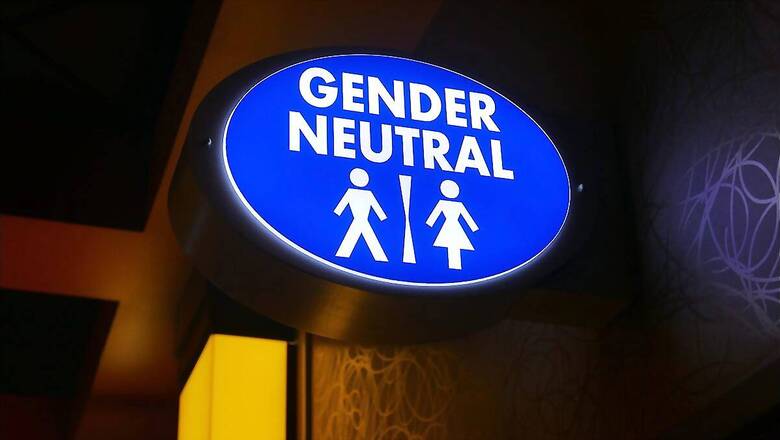Leveraging Technology for Toilet Inclusivity: Innovations in Accessible Design and Hygiene Solutions

views
In social and workplace settings, a well-known quote states, “Diversity is having a seat at the table, inclusion is having a voice, and belonging is having that voice be heard.” This powerful sentiment is equally relevant when considering public facilities. Here, the “table” represents the fundamental amenities we rely on, the “voice” signifies their accessibility to all, and “being heard” emphasises the crucial recognition of every individual’s needs and concerns. In a country where people from diverse socio-economic and physical backgrounds coexist, ensuring the fulfilment of everyone’s needs is of paramount importance.
One of our most basic needs is sanitation. Toilets form the bedrock of human dignity, health, and well-being. As António Guterres, United Nations’ Secretary-General writes eloquently, toilets save lives. However, not everyone possesses access to secure and inclusive toilets that cater to their diverse needs and preferences. In India, the success of the Swachh Bharat Mission has ensured that every Indian has access to a toilet. However, it overlooks one crucial problem: Indian toilets recognise just two genders: male and female. Many don’t recognise disability either.
Toilet inclusivity entails the purposeful design and management of toilets to accommodate various groups of people, irrespective of their gender, age, and disability. It also necessitates designing culturally appropriate, environmentally friendly, and hygienic toilets. Toilet inclusivity is important for several key reasons:
- Upholding human rights and dignity: Every individual has the right to access safe and dignified sanitation services without discrimination or harassment. Toilet inclusivity ensures that people can utilise toilets without fear of violence, stigma, or exclusion.
- Improving health and well-being: Inadequate sanitation contributes to diseases such as diarrhoea, cholera, typhoid, and worm infections, which can lead to death or disability. Toilet inclusivity prevents the spread of infections and promotes essential hygiene practices like handwashing and menstrual hygiene management.
- Enhancing education and productivity: Insufficient toilet facilities can adversely impact school attendance and hinder learning outcomes, particularly for girls who may miss classes or drop out due to menstruation or safety concerns. Toilet inclusivity enables students to remain in school and achieve better academic performance. Similarly, inadequate toilets can affect the health and productivity of workers, especially those in informal sectors or public spaces. Toilet inclusivity allows workers to conveniently and comfortably access sanitation facilities.
- Supporting environmental sustainability: Poor sanitation contaminates water sources and soil, contributing to water scarcity and climate change. Toilet inclusivity advocates for the adoption of water-efficient and waste-management technologies that conserve resources and safeguard the environment.
For people who are transgender, intersex or non-binary, inclusive toilets take on additional significance. There are three immediate benefits:
- Reduced anxiety and stress: Transgender, non binary and intersex students can finally use the ‘right’ toilet. The men’s toilet is the wrong toilet. So is the women’s toilet. The gender neutral toilet creates a space where they are welcome, and their presence is unquestionable. They feel more comfortable and safe. No more worrying about going to the wrong bathroom, no more worrying about who they will meet there, or how they will react, or whether they are going to be verbally or physically attacked.
- Promoting a sense of belonging: When LGBTQ+ students feel like they belong, they are more likely to be engaged in school and to feel supported by their peers and teachers. This can lead to better academic outcomes and a more positive overall experience at school.
- Preventing harassment and discrimination: Inclusive restrooms can help to prevent harassment and discrimination against LGBTQ+ students. When students know that they are safe and respected, they are less likely to be targeted for harassment or discrimination.
Accessible Design for Inclusive Toilets
What is an inclusive toilet anyway? Inclusive toilets are toilet facilities that are designed to accommodate the diversity of human bodies and identities. They are also known as gender-neutral, all-gender, or unisex toilets. Inclusive toilets can take different forms, but they share some common features:
- They do not segregate users based on their sex assigned at birth, gender identity, or gender expression.
- They have clear and respectful signage that indicates that they are open to everyone.
- They have adequate privacy and security measures, such as locks, curtains, or partitions.
- They have accessible features for people with disabilities, such as grab bars, ramps, or lower sinks.
Some designs that have worked well in India, and elsewhere in the world are:
Single-occupancy toilets
These are toilets that can be used by anyone regardless of their gender identity or expression. They are usually lockable and self-contained, meaning they have their own sink, mirror and waste bin. Single-occupancy toilets offer more privacy and security for users who may face discrimination or violence in gender-segregated toilets. They also benefit people with disabilities who need assistance from a caregiver of a different gender, as well as parents or guardians with children of a different gender.
Gender-neutral toilets
These are toilets that are open to anyone regardless of their gender identity or expression. They are usually arranged in a row or a cluster, with each toilet having its own door and partition. Gender-neutral toilets offer more choice and flexibility for users who do not identify with the binary genders of male and female, or who prefer not to disclose their gender when using a toilet. They also reduce the waiting time and congestion that may occur in gender-segregated toilets, especially for women and girls who often face longer queues than men and boys.
Mixed-gender toilets
These are toilets that combine elements of both gender-segregated and gender-neutral toilets. They usually have a common entrance and a shared sink area, but separate sections for male and female users, as well as some gender-neutral cubicles. Mixed-gender toilets offer more options and diversity for users who may have different preferences or needs when using a toilet.
Technological Solutions for Inclusive Toilets
Technology plays a pivotal role in achieving toilet inclusivity by creating innovative solutions to enhance the accessibility, design, and hygiene of toilets. Here are some examples of these solutions:
Smart toilets
These toilets utilise sensors, artificial intelligence, and internet connectivity to monitor and improve toilet functions and user experience. Smart toilets can detect user preferences, such as seat height, temperature, water pressure, and lighting, and adjust them accordingly. Additionally, they can analyse urine or stool samples to provide feedback on user health, detecting signs of diseases or deficiencies.
Sensor-based hygiene systems
These systems employ sensors to detect user presence and activate hygiene features such as flushing, cleaning, or disinfecting. For instance, sensor-based hygiene systems can automatically flush toilets after each use, disinfect toilet seats or surfaces, or employ UV lights to eliminate germs. Furthermore, these systems can alert maintenance staff when repairs or replenishments are required.
Accessibility aids
These devices or features assist users with disabilities or mobility issues in accessing and using toilets safely and comfortably. Examples include ramps, grab bars, handrails, seat lifts, voice commands, or braille signs that aid individuals with physical or visual impairments.
Complementing Technology with Social and Behavioral Interventions
While these technological innovations can foster inclusivity for all users by enhancing comfort, convenience, safety, and hygiene, it is important to acknowledge that technology alone cannot ensure toilet inclusivity. It must be accompanied by social and behavioural interventions that address the barriers and challenges faced by diverse user groups. The following interventions are essential:
Awareness campaigns
These activities educate users and stakeholders about the significance and benefits of toilet inclusivity, as well as the available technological solutions. Mass media, social media, community events, and school programs can be utilised to disseminate information and messages on toilet inclusivity.
Participation and consultation
Involving users and stakeholders in the design, implementation, and evaluation of toilet inclusivity initiatives is crucial. Surveys, focus groups, workshops, and feedback mechanisms can be employed to gather inputs and opinions from users and stakeholders regarding their needs, preferences, and challenges related to toilet inclusivity.
Particularly when it comes to the LGBTQ+ community, their lived experience must be taken into account. Those of us who identify as cisgender have no real understanding of the sort of fear and anxiety that most transgender, intersex and non-binary people go through when visiting gendered toilets. If we truly want to create spaces where these individuals feel safe and welcome, we need to involve them every step of the way.
Incentives and regulations
Measures that encourage or enforce the adoption and utilisation of toilet inclusivity solutions play a vital role. Subsidies, awards, recognition, or penalties can motivate or compel users and stakeholders to adopt and utilise such solutions.
An exemplary initiative that successfully combines technology and social interventions for toilet inclusivity is the Toilets 2.0 campaign launched by the Ministry of Housing and Urban Affairs (MoHUA) on World Toilet Day 2022. This campaign aims to transform public and community toilets in urban India through collective action involving citizens and Urban Local Bodies. The campaign encompasses five thematic areas: People for Toilets, Partners for Toilets, Design Toilets, Technology for Toilets, and Data for Toilets.
Another successful initiative that leverages technology and social interventions for toilet inclusivity is the Mission Swachhta aur Paani, an initiative by Harpic India & News18. This mission aims to create a ‘Jan Andolan’ to educate individuals about water usage and encourage sustainable and safe sanitation behaviours. It showcases inspiring stories from across the country where individuals and communities have taken steps to improve their sanitation and water situations. The initiative also serves as a platform for experts, policymakers, celebrities, and citizens to discuss and debate sanitation and water-related issues and solutions.
Mission Swachhta aur Paani doesn’t limit itself to cleanliness alone. It is a movement that recognizes the profound significance of toilets, viewing them not merely as functional spaces but as beacons of safety and acceptance for the marginalised. This exceptional mission is built upon the firm belief that clean and inclusive toilets are vital for fostering a society that embraces and empowers us all, unconditionally. With unwavering dedication, Harpic and News18 actively include and advocate for the LGBTQ+ community, propelling the message that every individual deserves access to safe and accepting spaces, where their dignity is upheld, and their presence is celebrated.
Conclusion
To solve the problem of toilet inclusivity, we have to operate on several levels: all the way from design to creating the infrastructure to driving adoption to breaking mental barriers and biases towards the LGBTQ+ community. We know of designs that are working, we have the technology to construct and maintain these toilets, and we’re making strides in the legal and policy protections afforded to the LGBTQ+ community.
We are also making enormous strides as a society. In 2014, we recognised Hijras as the third gender. In 2018, we decriminalised homosexuality. And today, we are making great strides in fostering diversity in our workplaces, schools, colleges and in our public sphere. Toilets are one small, but very significant part of that larger picture.
We all have to go to the toilet. Toilets that accommodate all of us are a good thing. We have the opportunity today, to use the technology and design advances at our disposal to establish a culture of toilet inclusivity that respects human rights, promotes health and well-being, enhances education and productivity, and supports environmental sustainability. Let’s take it.
Join us here, to learn how to play your part in building a more just, more equitable, more Swachh, and more Swasth Bharat.



















Comments
0 comment